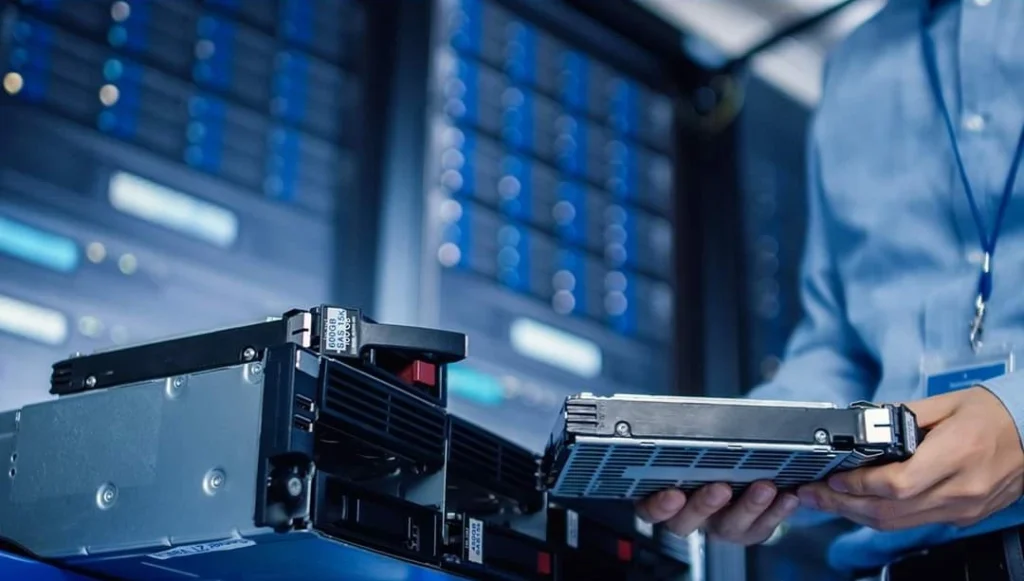The recent pandemic has brought a whole new set of challenges to the world. This has forced many organizations to do their work remotely. And the students of many educational institutions like schools and colleges have also conducted classes remotely. Due to this, while meeting various needs, all such changes have to be made in many areas, including technology, which under normal circumstances would have taken much longer to come.
The common theme of these changes is to ensure availability of information in a faster time frame. That\’s why maintaining the current state of data centers has become very challenging.
The market value of the data center services industry in 2020 was $48.9 billion. It is estimated that this value will increase to $105.6 billion by 2026.
According to a market report on the data center services industry, the main factors behind this potential growth are:
- • Remote workers or remote work
- • Digital transformation of various existing processes
- • Increasing improvement of various industries through the use of digital technology
- • Increasing use of digital technology among SMEs or small and medium enterprises
- • Increasing use of broadcasting methods called over-the-top (OTT) services. (OTT is a method by which movies, shows or television channels are broadcast directly over the Internet without the need for traditional cable or satellite broadcasting.)
- • Data driven technologies such as IoT or machine learning continue to evolve. As these technologies require a lot of data to work, so too do these technologies generate a lot of data.
In short, today there are huge advances in technologies that require data centers to function. As such, the demand for using various cloud services is increasing now. And the work of the cloud service organization depends on the data center. However, both building and maintaining data centers require huge investments. That\’s why most cloud service organizations don\’t have their own data centers. They contract with various external data centers.
As data center work and demand continue to grow, here are some of the trends that will come in the industry in the near future.
- Automation One of the changes that have come as a result of the recent global pandemic is the trend of employees working online. This trend is called remote working. This has resulted in a significant reduction in the number of office workers in many countries. At the same time, many organizations are forced to automate many of their tasks. The data center of the future will meet this need to automate institutional tasks. Technologies such as Artificial Intelligence (AI) and Robotic Process Automation (RPA) will be employed in data centers to partially or fully automate various tasks.
- Edge Computing \’Edge computing\’ is a distributed or \’distributed\’ computing system. It stores data somewhere close to the data source. The work of creating, storing, processing and analyzing the data is at the client, where the data is sourced through \’edge computing\’. It is not a specific technology, rather it can be called a method. Edge computing will play a huge role in the development of data centers in the future. Because over time more people will adopt smart solutions for various daily tasks at office or home. As a result, the demand for \’edge computing\’ will continue to increase. Demand for \’edge computing\’ devices will increase with time. \’Edge computing\’ will result in decentralization of computing power. And this decentralization will have an impact on the data center. As a result, the data center of the future will be very different than it is today. Also, if \’Edge Computing\’ is more advanced through \’5G Network\’, this method can work as an alternative to conventional data centers. Through this, various processes related to technologies like Artificial Intelligence (AI) or Internet of Things (IoT) will develop more quickly.
- Environmental awareness Currently, various businesses are becoming more aware of climate change. Interest in taking quick steps to deal with the climate crisis is also seen among them. As a result, environmental awareness should be added to the data center work strategy as in other industries. According to a report published in the \’Journal of Science\’, data centers account for 1 percent of the total energy used worldwide. However, between 2010 and 2020, data center workloads increased 6 times. But compared to that, the level of energy consumption has not increased at the same rate. Data centers of the future are being built in specific locations and specifically to operate more efficiently. For example, many companies like Google, Facebook and Amazon have bought land in Sweden to build data centers. Because Sweden is a cool region, it doesn\’t require a lot of resources or power to keep servers cool. Microsoft, meanwhile, has taken a somewhat unusual, but hopefully different path. Through one of their projects named \’Project Natick\’, research is being done on how to set up data centers under the sea. Data centers located on seabeds or undersea land are protected from corrosive oxygen in the air, moisture and other hazards and complications. As a result, those data centers can work more efficiently.


